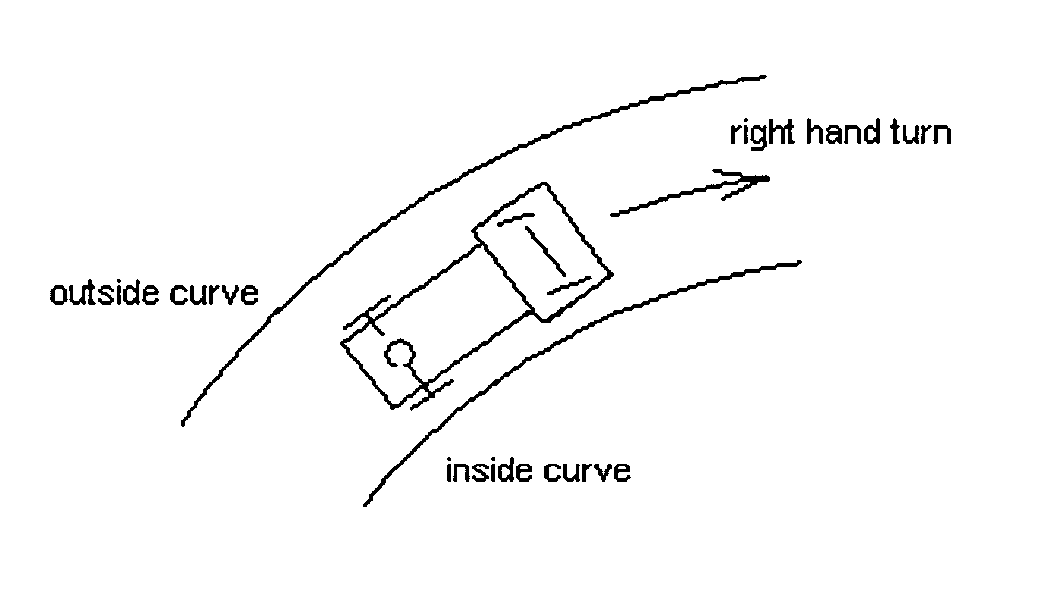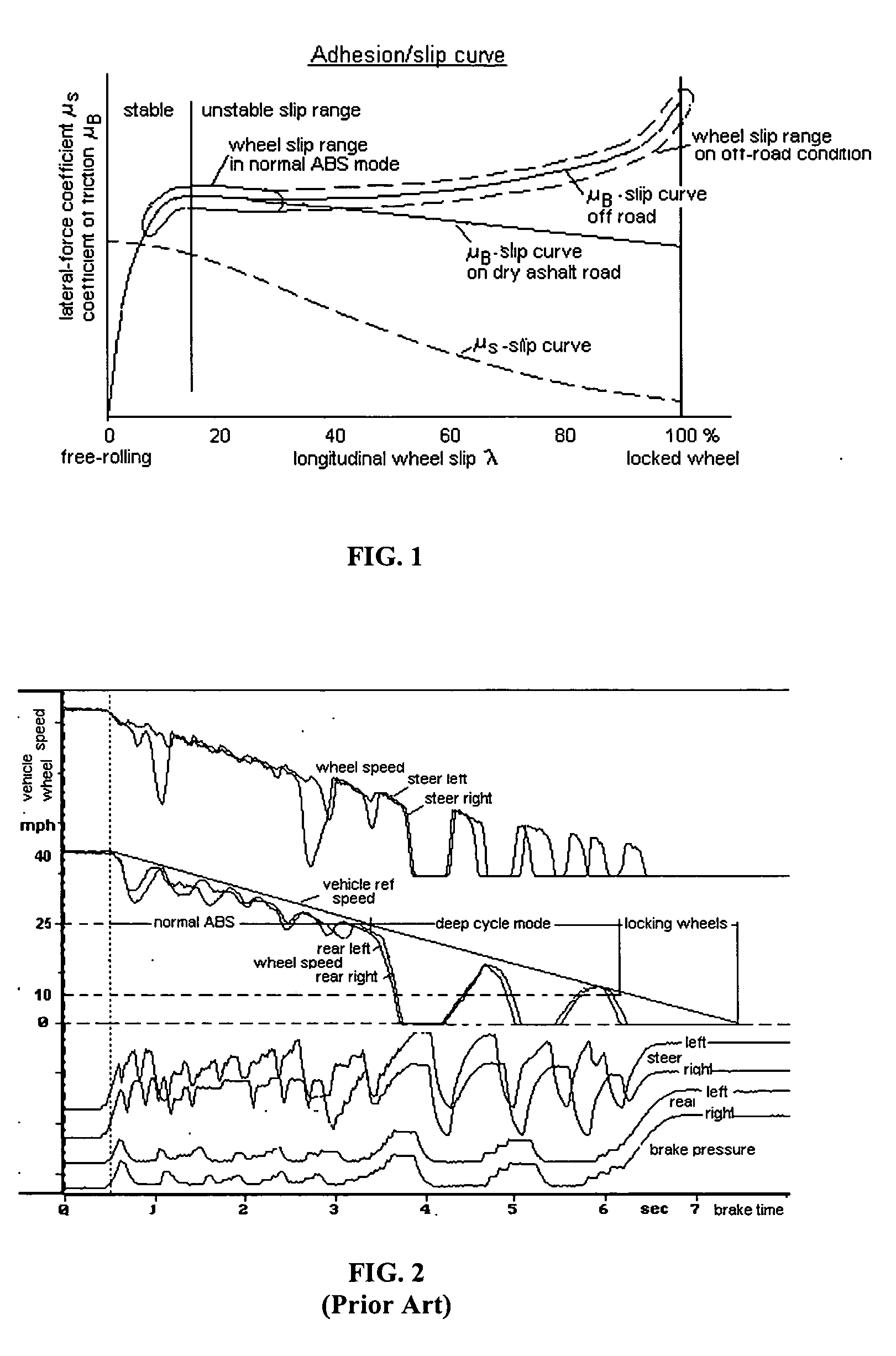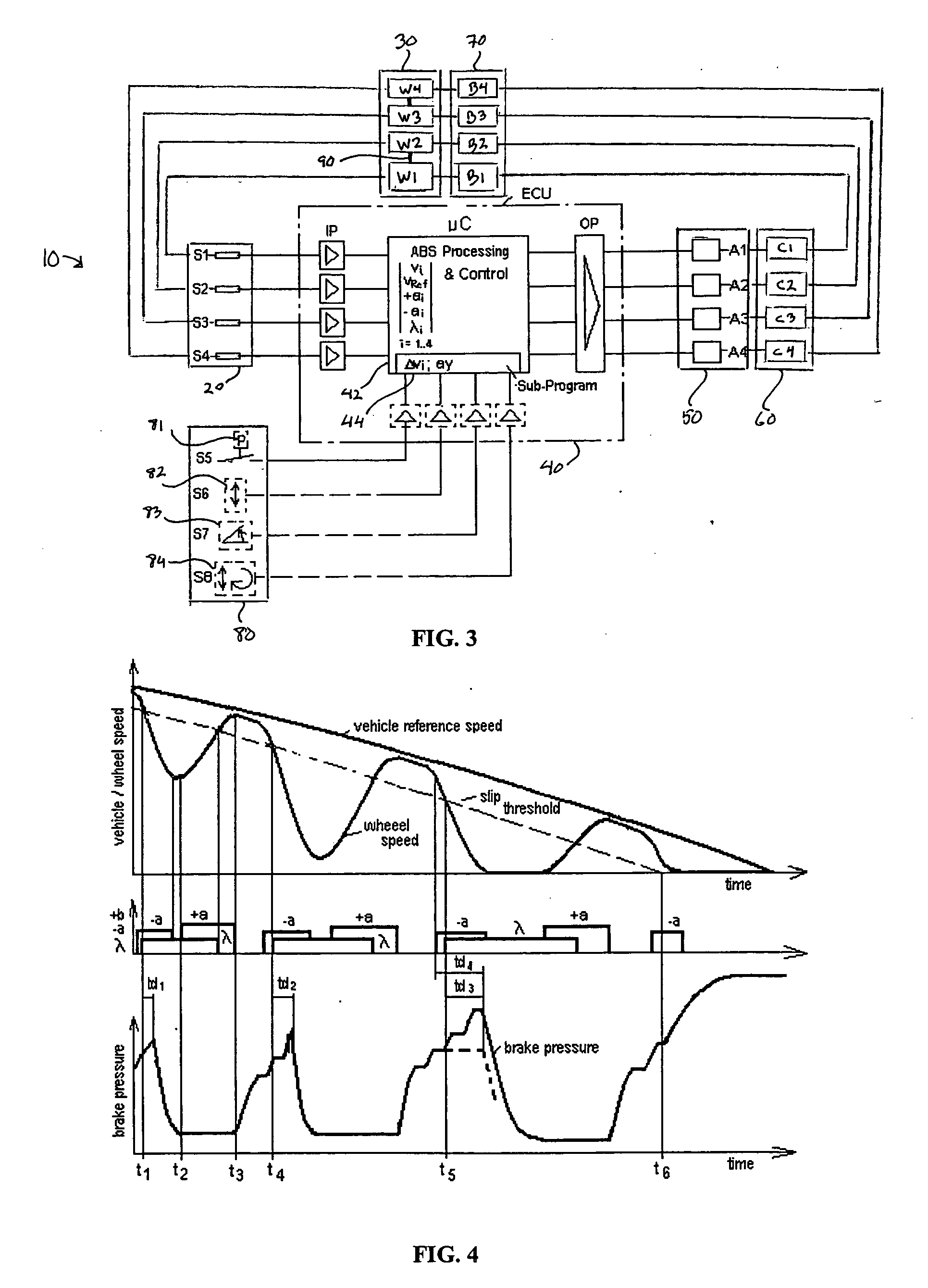ABS control system for off-road driving conditions
a control system and off-road technology, applied in the direction of braking systems, braking components, transportation and packaging, etc., can solve the problems of reducing or detracting side force, changing the rolling friction value and slowing down the vehicle, and the anti-lock system may actually require a longer braking distance, etc., to achieve greater vehicle stability and tractability, and shorten the time period , the effect of reducing the slip threshold
- Summary
- Abstract
- Description
- Claims
- Application Information
AI Technical Summary
Benefits of technology
Problems solved by technology
Method used
Image
Examples
Embodiment Construction
[0028] The present invention provides a system for controlling the ABS system or electronically controlled brake system in a vehicle that is being operated in the “off-road” mode because off road surface conditions are less than optimal for the operation of the ABS system in the regular or normal mode. In general terms, this invention allows the vehicle's ABS system to prioritize or optimize the performance of the system depending on the actual driving situation encountered by the driver. The control mode disclosed herein is optimized for a shorter stopping distance when driving at a lower vehicle speed or driving straight ahead, and provides more transferable side forces when driving at a higher vehicle speed and / or driving in a curve. By diversification of the wheel slippage rate and / or time period for an extended wheel slippage, greater cornering stability is provided over a shorter stopping distance.
I. System, Variables and Calculations
[0029] With reference to the Figures, FI...
PUM
 Login to View More
Login to View More Abstract
Description
Claims
Application Information
 Login to View More
Login to View More - R&D
- Intellectual Property
- Life Sciences
- Materials
- Tech Scout
- Unparalleled Data Quality
- Higher Quality Content
- 60% Fewer Hallucinations
Browse by: Latest US Patents, China's latest patents, Technical Efficacy Thesaurus, Application Domain, Technology Topic, Popular Technical Reports.
© 2025 PatSnap. All rights reserved.Legal|Privacy policy|Modern Slavery Act Transparency Statement|Sitemap|About US| Contact US: help@patsnap.com



